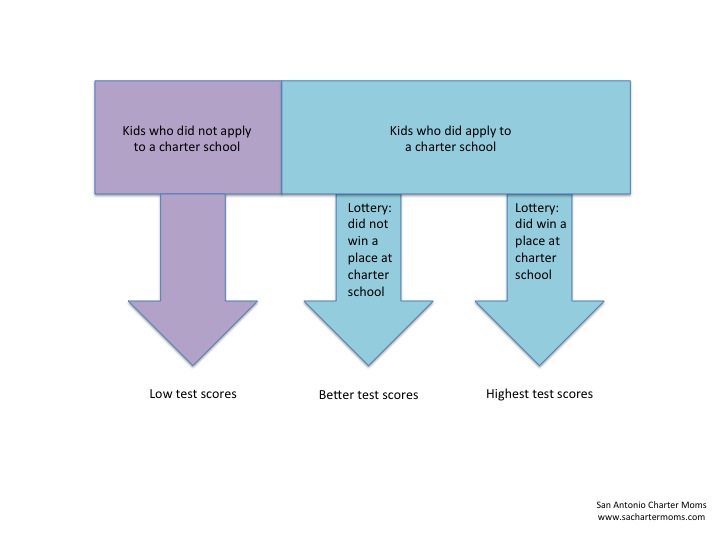A reader’s comment about my recent post, “It’s not because of skimming”, shows possible confusion about what we can learn from studies comparing students who entered the lottery and lost versus those who entered the lottery and won.
I made a graphic to illustrate. Let’s assume the kids who apply for charter schools (on the blue side) are a self-selected group with supportive, motivated families and other characteristics for success. On average, the kids on the blue side are likely to do better than the kids on the purple side, no matter what school they go to.
The interesting question is, “What difference does the school make?” The graphic shows two blue arrows: one for kids who entered the lottery and lost, and one for kids who entered the lottery and WON a place at a charter school.
According to the studies cited in the op-ed, the kids who won a place at a charter school got “about four extra years worth of education by the time they complete high school.” That sounds like a very effective intervention.
Medical trials work in a similar way. Research volunteers are randomly divided into two groups: an experimental group and a control group. The experimental group gets the drug (or, charter school) and the control group gets the placebo (or, no charter school). The results are compared to see if the drug is effective. Even if the volunteers are more healthy or less healthy than the population as a whole, that’s irrelevant because they are randomly assigned to two groups.
So that’s how charter school lotteries work like a randomized controlled trial. Hope that clears things up.
